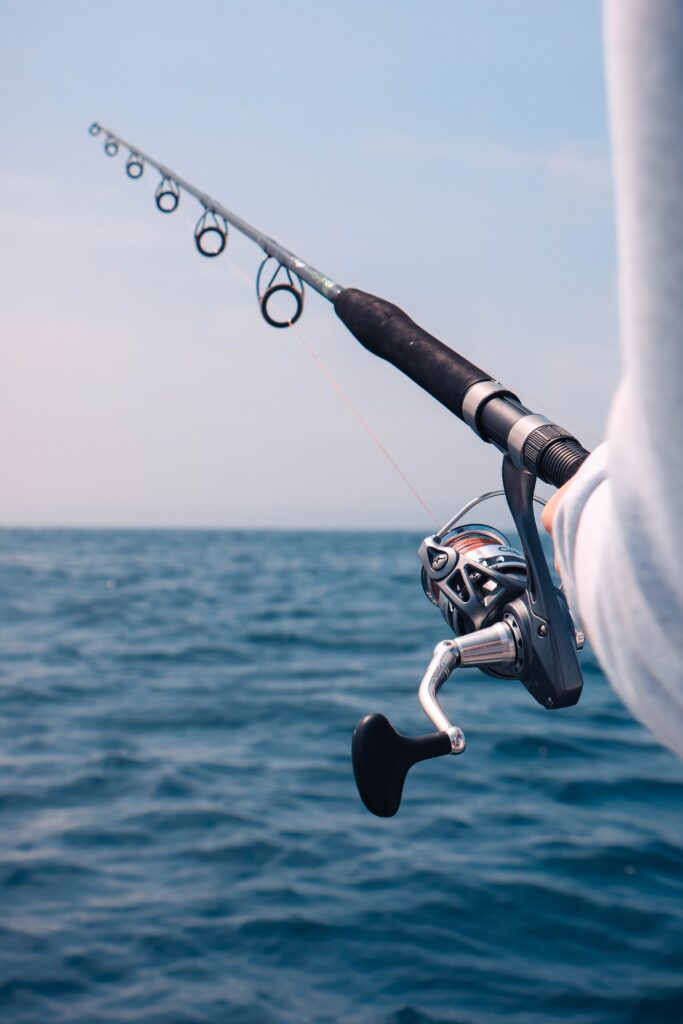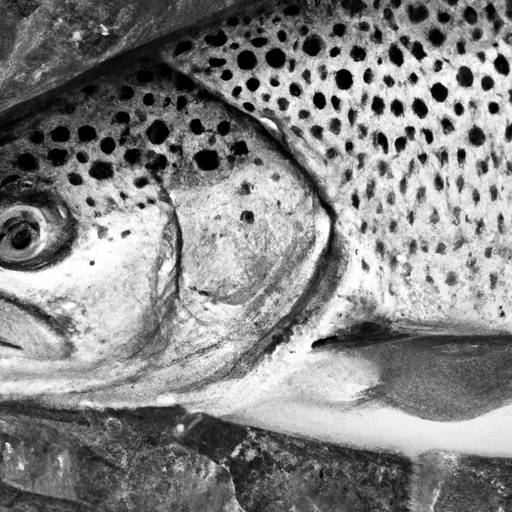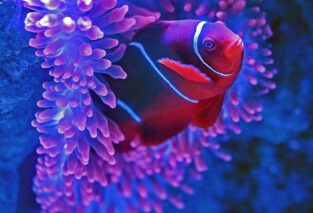April is the perfect time to grab your fishing gear and head out to the water. With the arrival of spring, fishing enthusiasts are eager to know if April is a suitable month for fishing adventures. Luckily, “Can You Go Fishing In April: Spring Fishing Tips And Techniques” is here to guide you through this exciting season. Packed with valuable tips and techniques, this article is your ultimate resource for making the most of your fishing trips in April. Discover the best fishing spots, learn about the ideal fishing techniques, and uncover the secrets to a successful spring fishing experience. Don’t miss out on this opportunity to enhance your fishing skills and enjoy a memorable time on the water this April.

Best Fishing Spots in April
Rivers and Streams
April is a great time to hit the rivers and streams for some fantastic fishing opportunities. The water levels are typically stable, and the fish are starting to become more active after the winter months. Look for areas of slower-moving water, such as eddies or pools, where fish tend to gather. Popular fish species to target in rivers and streams in April include trout, bass, and walleye.
Lakes and Ponds
If you prefer fishing in lakes and ponds, April can be a rewarding month for you. As the ice melts and temperatures rise, fish start moving towards the shallows to feed and spawn. Look for areas with submerged structure like fallen trees or rock piles, as these are often hotspots for fish activity. Bass, crappie, and bluegill are common catches in lakes and ponds during this time of year.
Coastal Areas
For those who enjoy fishing in coastal areas, April offers a variety of opportunities. From bays and estuaries to surf fishing along the shoreline, there are plenty of options to explore. In April, you can target species like striped bass, flounder, and redfish. Pay attention to tides and currents, as they can greatly affect fish movement and feeding patterns. Be prepared with different types of bait and lures to cater to the preferences of different fish species.
Understanding Spring Fishing Conditions
Water Temperature
Water temperature plays a crucial role in fish behavior during the spring months. As the water warms up, fish become more active and move towards shallower areas to feed and spawn. Keep an eye on the water temperature to determine where the fish might be congregating. Most fish species have preferred temperature ranges, so knowing this information can greatly increase your chances of success.
Weather Patterns
Monitoring weather patterns can also give you valuable insights into fishing conditions. Fish tend to be more active before a storm front moves in, which can result in increased feeding and better fishing opportunities. Additionally, changes in wind direction and intensity can affect fish behavior. For example, a strong onshore wind might push baitfish towards the shoreline, attracting larger predator fish.
Fish Behavior
Understanding how fish behave during the spring season is crucial for a successful fishing trip. Many species are in the process of spawning, meaning they are more likely to be found in shallow areas near the shoreline. Others may be migrating from larger bodies of water to smaller tributaries for spawning purposes. Take the time to research the behavior of the specific fish species you are targeting, as it will give you valuable information on where to find them and what techniques to use.

Essential Fishing Gear for Spring Fishing
Fishing Rods and Reels
Having the right fishing rod and reel combination is essential for a successful spring fishing trip. Choose a rod and reel that are suitable for the fish species you plan on targeting. For example, if you’re fishing for larger game fish like bass or pike, a medium to heavy action rod is recommended. On the other hand, if you’re targeting smaller fish like panfish, a lighter action rod will do the job.
Fishing Lines and Leaders
Selecting the appropriate fishing line is also important. Monofilament lines are a popular choice for anglers due to their versatility and affordability. However, if you’re targeting larger fish or fishing in heavy cover, consider using braided lines or fluorocarbon lines for added strength and sensitivity. Additionally, using leaders can help prevent fish from breaking off or spotting your line.
Hooks, Baits, and Lures
Having a variety of hooks, baits, and lures is essential for enticing fish to bite. Different fish species have different feeding preferences, so having a selection of options will increase your chances of success. Live bait such as worms and minnows are always a reliable choice, but don’t forget about artificial lures like crankbaits, soft plastics, and spinnerbaits. Experiment with different colors and sizes to determine what the fish are biting on.
Tips for Selecting the Right Bait
Match the Hatch
One important tip for selecting the right bait is to “match the hatch.” This means using bait that mimics the natural food sources available to the fish in the area. Pay attention to what insects or baitfish are present and choose baits that closely resemble them. Matching the hatch increases the likelihood of fooling the fish into thinking your bait is a legitimate meal.
Consider Water Clarity
Water clarity can also influence bait selection. In clear water, fish can see your bait more easily, so using more natural-looking lures is often effective. On the other hand, in murky or stained water, using baits with bright or contrasting colors can help attract fish’s attention. Adjust your bait selection based on the water conditions to maximize your chances of enticing a bite.
Experiment with Live Bait and Artificial Lures
Don’t be afraid to experiment with both live bait and artificial lures to see what the fish prefer. Some days, the fish may be more inclined to strike at live bait, while other days they may be more responsive to artificial lures. Carry a variety of options with you and be prepared to adjust your bait selection as needed based on the fish’s behavior and preferences.

Techniques for Spring Fishing Success
Casting and Retrieving
Casting and retrieving is a versatile technique that can be used in a variety of fishing situations. This technique involves accurately casting your bait or lure to the desired area and then reeling it in at a steady pace, mimicking the movement of a swimming or fleeing prey. Vary the speed and depth of your retrieve to see what entices the fish to bite. This technique is particularly effective for targeting species like bass, trout, and walleye.
Bottom Fishing
Bottom fishing is an effective technique for targeting fish that are feeding near the bottom of the water column. Use sinkers or weights to keep your bait or lure close to the bottom, where fish like catfish, halibut, and flounder are often found. This technique can be used in rivers, lakes, or coastal areas with success.
Drift Fishing
Drift fishing is a technique commonly used in rivers or moving water. It involves allowing your bait or lure to drift naturally with the current, enticing fish that are positioned along the riverbed. This technique can be effective for targeting species like trout and salmon. Use a weight or drift bobber to control the depth of your presentation and adjust your drift speed to match the current.
How to Locate Fish in April
Study Topographic Maps
Studying topographic maps before your fishing trip can give you valuable information about the underwater terrain and potential fish-holding areas. Look for areas where the depth changes, such as drop-offs or underwater structure like reefs or submerged vegetation. These are often key areas where fish congregate, especially during the spring months.
Look for Structure and Cover
Structure and cover play a vital role in fish habitat and can be key factors in locating fish. Look for areas with submerged rocks, fallen trees, or underwater vegetation, as they provide shelter and hiding spots for fish. These areas often attract baitfish, which in turn attract larger predator fish. Casting your bait or lure near these areas increases your chances of a successful catch.
Use Polarized Sunglasses
Investing in a good pair of polarized sunglasses can greatly improve your ability to locate fish in the water. Polarized lenses reduce glare on the water’s surface, allowing you to see beneath the surface and spot fish, structure, and vegetation. This can be particularly useful when fishing in clear or shallow water where fish are more visible.

Safety Precautions to Take While Spring Fishing
Wear a Personal Flotation Device
Safety should always be a top priority when fishing, especially in the spring when water conditions can be unpredictable. Wearing a personal flotation device (PFD) is essential, especially if you’re fishing from a boat or kayak. Accidents can happen, and wearing a PFD can greatly increase your chances of staying safe in the event of an emergency.
Check Weather Forecast
Before heading out on a fishing trip, always check the weather forecast. Sudden storms or changes in weather conditions can make fishing dangerous, particularly in open water or coastal areas. Plan your trip accordingly and be prepared to reschedule if the weather becomes unfavorable.
Watch Out for Changing Water Conditions
In the spring, water conditions can change rapidly, especially in rivers and streams. Keep an eye out for rising water levels, fast-moving currents, or debris flowing downstream. If the water conditions become unsafe, it’s best to find an alternative fishing spot or postpone your trip until conditions improve.
Fishing Regulations and Licensing
Check Local Fishing Regulations
Before you go fishing, it’s crucial to familiarize yourself with the local fishing regulations. Different areas may have specific rules regarding catch limits, size restrictions, and fishing seasons. Ignorance of these regulations can result in fines or penalties, so take the time to research and understand the rules of the area you plan to fish in.
Obtain the Appropriate Fishing License
Obtaining the appropriate fishing license is a legal requirement in most jurisdictions. Fishing without a license can result in fines or other penalties. Make sure to purchase the necessary fishing license for the area you plan to fish and carry it with you at all times during your fishing trip.

Handling and Releasing Fish Ethically
Use Proper Handling Techniques
When catching and handling fish, it’s important to minimize harm and stress to the fish. Wet your hands before handling the fish to protect their delicate slime coating. Hold the fish gently and avoid squeezing or damaging their internal organs. If you need to remove the fish from the water for a picture, do so quickly and return it to the water as soon as possible.
Minimize Fish Stress
Minimizing fish stress is essential for the fish’s well-being and survival. Avoid excessive handling or keeping the fish out of the water for extended periods. If you plan on releasing the fish, do so quickly and with care to minimize its stress level. Properly releasing fish ensures their survival and allows them to continue to contribute to the ecosystem.
Follow Catch-and-Release Best Practices
If you catch a fish that you plan to release, it’s important to follow catch-and-release best practices. Use barbless hooks or flatten the barbs to make hook removal easier and less harmful to the fish. Handle the fish with care and release it gently back into the water. Allow the fish time to recover before swimming away by gently supporting its body in the water until it is ready.
Best Times of Day for Spring Fishing
Early Morning
Early morning is often considered one of the best times of day for spring fishing. Fish tend to be more active during the cooler hours of the morning before the sun and air temperatures rise. This is a great time to target fish that are feeding near the surface or in shallower areas. Get an early start to your fishing day to take advantage of this prime time.
Late Evening
Similar to the early morning, late evening can also provide excellent fishing opportunities. As the sun starts to set and temperatures cool down, fish become more active again. This is a particularly effective time for targeting fish that prefer low-light conditions, such as bass and walleye. Enjoy the peacefulness of an evening fishing session and increase your chances of success.
Adjusting to Weather and Water Conditions
While early morning and late evening are generally considered the best times for fishing in the spring, it’s important to adjust your fishing plans based on weather and water conditions. Cloudy or overcast days can provide excellent fishing opportunities throughout the day, as fish may be more comfortable and active. Additionally, if water temperatures are cooler or if a cold front has recently passed through, fish may be more sluggish and less active during the early morning hours. Stay aware of the conditions and adjust your fishing schedule accordingly for the best chance of success.
Fishing in April can be a thrilling and rewarding experience. By understanding fishing conditions, having the right gear, selecting the right bait, using proper techniques, and taking safety precautions, you can maximize your chances of success. Remember to follow fishing regulations and practice ethical handling and releasing of fish. Whether you prefer rivers and streams, lakes and ponds, or coastal areas, April offers a variety of fishing opportunities for anglers of all skill levels. So grab your gear, choose your favorite fishing spot, and get ready for an unforgettable spring fishing adventure!





